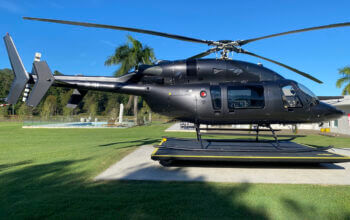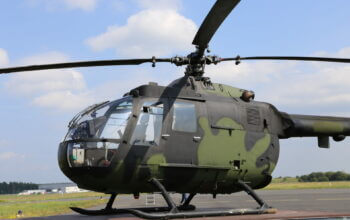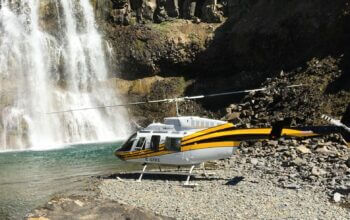Airspace Experience Technologies (ASX) revealed substantial progress with the design of its tilt-wing eVTOL concept and aims to fly a full scale “block one” demonstrator in the third quarter of 2021.

“I can say that we’ve accomplished more this past year during the pandemic than we have during any prior year,” said ASX co-founder and CEO Jon Rimanelli, presenting to a virtual audience at the Vertical Flight Society’s eighth annual Electric VTOL Symposium on Jan. 27.
“Over the last four years, we designed, modeled and built as many as six different subscale electric VTOL configurations, and what we have now is a design that incorporates innovations and lessons learned into a very exciting configuration which we have now frozen, that we are now calling the Sigma Six aircraft,” he said.
Rimanelli showed only a silhouette of Sigma Six during the conference, but discussed the evolution of the vehicle at length. Most significantly, he said, ASX will be developing Sigma Six as a VTOL-only aircraft, rather than also giving it the ability to take off and land like an airplane.
“The previous design incorporated conventional take-off and landing, and the tradeoffs in the expense and the costs associated with adding that capability really put the program at risk,” he explained.
That earlier design also featured stacked, co-rotating propellers, which on Sigma Six have been replaced with individual rotor heads for simplicity. The positions of the prop motors have been relocated for improved range, stability, and control, and the landing gear has been revised for better aerodynamics.
According to Rimanelli, Sigma Six features “a high run rate composite structural design that is going to enable us to achieve run rates equivalent to those found in the automotive industry.” That includes a completely redesigned wing, which is smaller than the wing on the previous design.
“[With] the elimination of the conventional take-off and landing capability, we were able to reduce our span from 48 feet to 38 feet, which improved our overall footprint and reduced weight,” Rimanelli said. The wing also features a thermal management system that repurposes waste heat for compartment heating and deicing.
Battery placement has been revised to optimize occupant safety, structural integrity, and outgassing in the event of a thermal runaway. ASX has evaluated several batteries and downselected to three options, but “nothing has been frozen yet with respect to batteries,” Rimanelli said. He noted that the energetics bay can be reconfigured to employ a range of extension options, including hydrogen and turbo-generators.
Meanwhile, he added, ASX has streamlined the design of the payload module for manufacturing, and also simplified the payload stabilization mechanism, “which is a big deal for us because the previous design required a very, very big heavy actuator.” The company expects to complete detailed design and analysis of the payload module by the second quarter of this year, with a prototype to follow in the third quarter — around the same time as the launch of flight testing.
“Since this aircraft can be built and tested without a payload module, we’ll begin the flight module testing probably in advance of that payload module being completed,” Rimanelli said.
ASX is based at the city airport in Detroit, Michigan, aka “Motor City.” According to Rimanelli, “Our mission has always been from day one to leverage the automotive industrial base to design and build failure-tolerant electric VTOL aircraft that are modular and scalable, ultimately to support defense missions, humanitarian aid, commercial cargo, and urban air mobility.”
The company is aiming to launch remotely piloted cargo operations by 2023, and pilot-optional autonomy by 2030. With the Sigma Six design, ASX is targeting a payload of 1,000 pounds (450 kilograms), a top speed of just under 200 miles per hour (320 kilometers per hour), and a cruise speed of 126 mph (202 km/h). ASX anticipates a fully electric range of up to 90 mi (145 km) with 25 percent reserve and a hybrid range of over 200 mi (320 km).
The company is also expecting Sigma Six to be relatively quiet, with noise emissions of less than 70 decibels — an important consideration for the urban air mobility mission in particular.
“[For] our propeller motor system, according to our models in hover conditions, we’re looking at a 0.4 Mach tip speed, which is very low and very slow,” Rimanelli said. “We expect the noise to be equally low. We’ll be able to measure that and validate that in coming months.”









Well done Jon !!!!!
Well done, Asx do you. Ponder
back to back motor/alternator
For battery capacty
Congratulations you guys are genius..